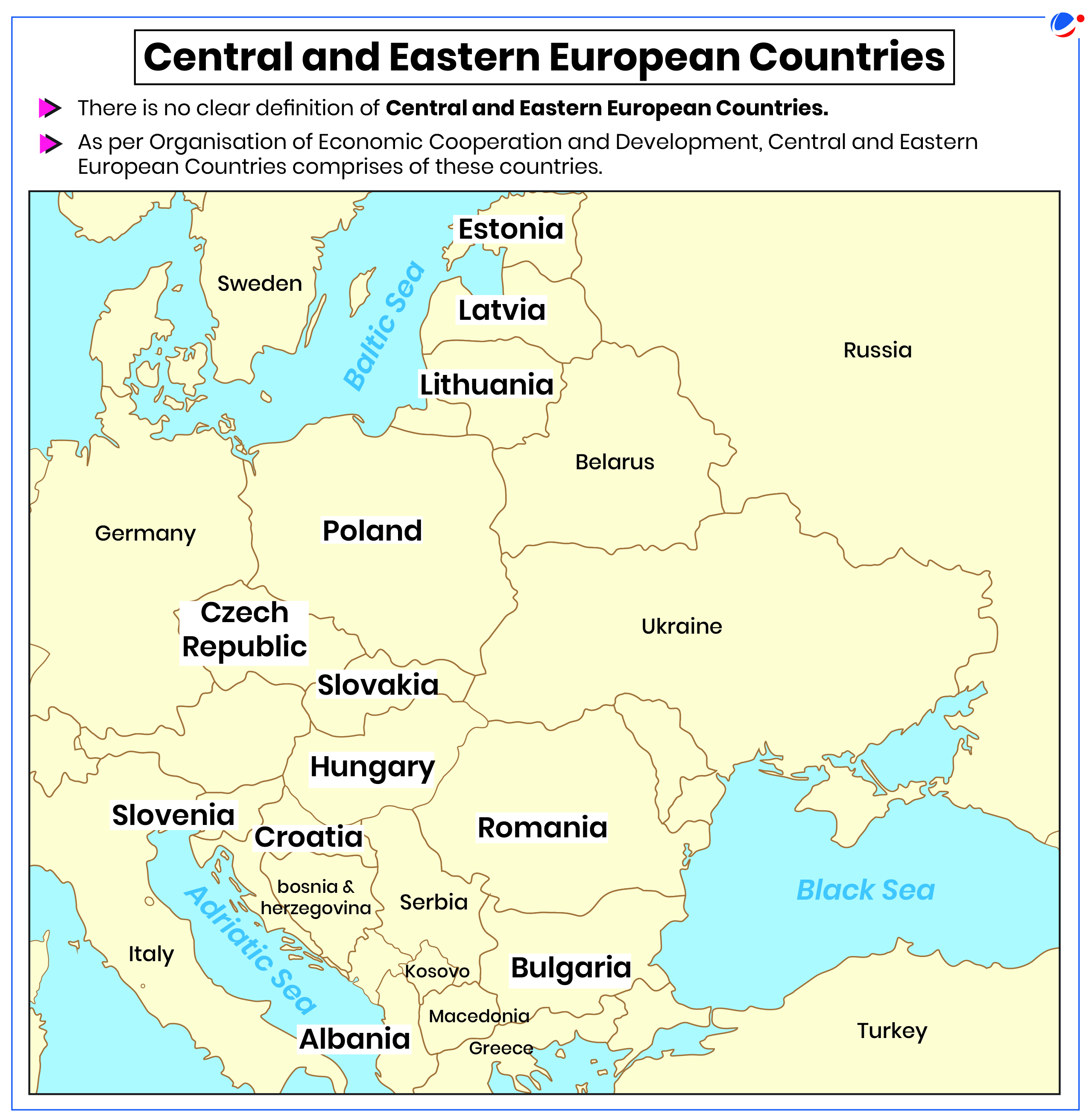Why in the News?
Recent visit by India's PM to Poland showcases strategic shift towards raising Central and Eastern Europe's importance in India's foreign policy.
Significance of India's-Central and Eastern Europe Relations

- Strategic Location: Central and Eastern Europe stands at the crossroads of Europe and Asia, a strategic location between Russia and the Middle East.
- Moreover, these countries can act as the main gateway for Indian exports to Europe.
- To manage China's influence in the region: 16+1 initiative and Chinese investments through Belt and Road (BRI) initiative has not gone down very well with the EU which perceives China's outreach as an attempt to create differences within the bloc.
- 16+1 is an initiative by China to promote business and investment relations with 16 countries of Central and Eastern Europe.
- EU sees India as an economic counterweight to China.
- Reformed Multilateralism: Various Eastern European countries have shown unequivocal support for India's bid for a permanent seat on the UNSC.
- For instance, Visegrád Group (V4 countries) i.e. Czech Republic, Poland, Hungary, Slovakia has also shown support for India's Nuclear Supplier Group (NSG) membership.
- Global Power Projection: India positioning itself as a leading global power with influence well beyond its South Asian neighbourhood.
India' Outreach to Central and Eastern Europe
- Strategic engagement: India has increased its diplomatic and economic engagements with Central and Eastern European (CEE) countries.
- Economic & commercial Relations: Poland is India's largest trading & investment partner in Central & Eastern Europe (Bilateral trade worth US$6 billion in 2023).
- India-Middle East-Europe Economic Corridor (IMEC): Announced on the side-lines of the G20 summit, it aims to integrate Asia, Europe and the Middle East.
- Cultural and Educational Relations: India is leveraging its cultural heritage to strengthen ties with CEE countries.
- Strong tradition of Indology studies in Poland, Yoga, Good Maharaja Connection (Maharaja Jam Saheb Digvijaysinhji) etc.
- Strengthening of India-EU strategic partnership: India is deepening its diplomatic engagements with regional member states like Poland, bolstering the India-EU partnership.
- Strategic Autonomy at display: E.g. India's PM visit of Ukraine shows India's view of Ukraine is independent from that of Russia.
Concerns in India's Reorientation toward Eastern Europe
- India-Russia relations: Traditional Soviet relations perspective of India with respect to Eastern Europe undermines current geopolitical opportunities.
- Changing geopolitics of the Eurasian region: E.g. Russia Ukraine War
- Growing Chinese influence: China's rising economic and political footprint in the region with initiatives such as Belt and Road Initiative
- Delayed implementation of Projects: E.g. India-EU Connectivity Partnership, India-Middle East-Europe Economic Corridor (IMEC)
- Ensuring autonomy while managing divergent interests: E.g. QUAD, SCO,G7
Conclusion
As India-EU cooperation deepens, it is vital for the two sides to revitalise their ties with the broader Central and Eastern European region. The geopolitical significance of Eastern Europe has been rightly pointed by Halford Mackinder with his Heartland Theory, "Whoever rules East Europe commands the Heartland; whoever rules the Heartland commands the World-Island; whoever rules the World-Island commands the World.





